A Florida man almost lost his leg — and could have died — from a rare flesh-eating bacterial infection, which developed after he was bitten in the thigh during a family fight.
Donnie Adams, a 53-year-old funeral assistant from the Tampa suburb of Riverview, went to the emergency room in mid-February to treat a bump the size of a dollar coin on his upper left thigh.
He was sent home with a tetanus shot and antibiotics, but the injury got worse over the next few days, becoming red, swollen and painful to the touch.
His thigh “almost looked like an orange peel because of the swelling that was underneath it,” Dr. Fritz Brink, a wound care specialist at HCA Florida Healthcare who treated Adams, told NBC News.
“By day number three, the leg was swollen, it felt very warm and I had problems with mobility and everything,” Adams said on Friday.
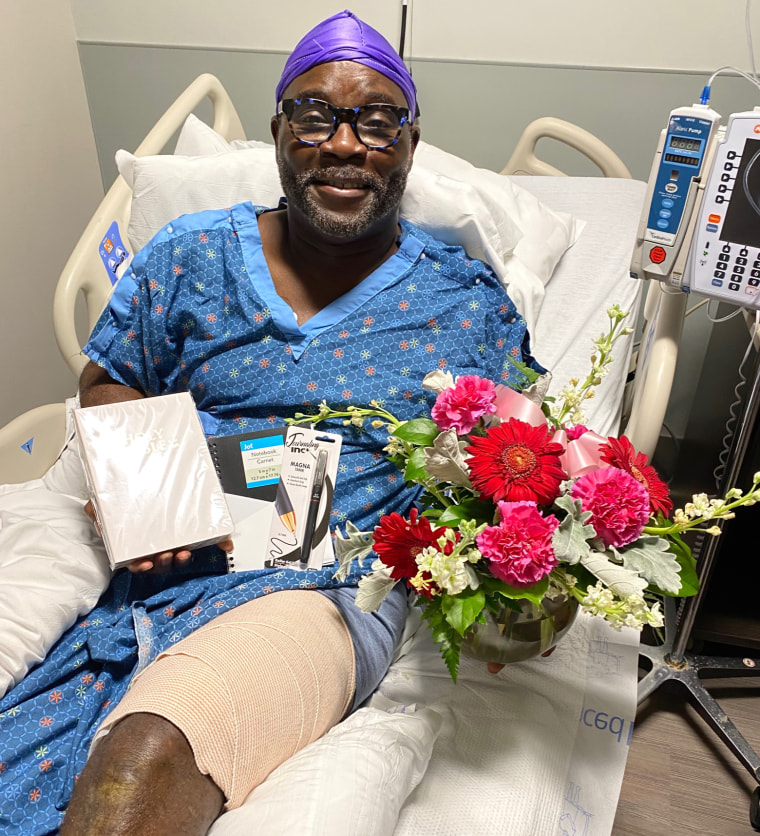
Brink said Adams told him that he sustained the bite while breaking up a family altercation.
“He pulled them off of each other and, in the process, he got bit,” Brink said.
The wound’s appearance matched Adams’ account, he added.
“When I saw him in the hospital, you could still see the bite marks on his thigh,” Brink said. “It made teeth marks. I was very convinced that he was telling a true story.”
He said he rushed Adams to the operating room at HCA Florida Northside Hospital in St. Petersburg on Feb. 19. Adams underwent a second surgery several days later, then was released from the hospital around the second week of March, Brink said.
“I knew it was serious then after I got the tetanus shot,” Adams said, then added, “I had no imagination that it would be anything serious like this, that serious.”
Adams declined to say what sparked the family dust-up or identify which relative bit him.
“Family is everything, and sometimes things go down in families,” he said. “I’m a man of faith. People can be forgiven and that’s the way I feel about that. It was a family event that went sour between two people and even though I got in middle of it and I got injured, it doesn’t mean I’m going to hate my family over this.”
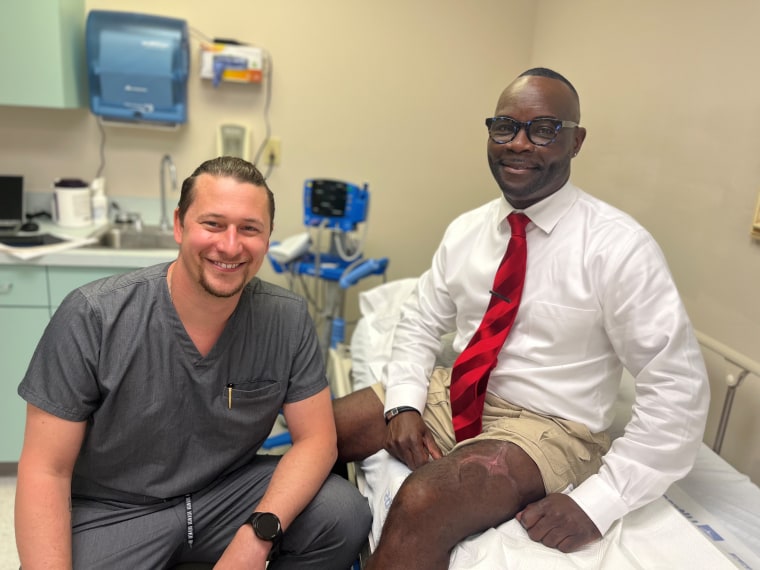
Adams said he was likely only a day or two from needing an amputation.
“I would have lost my leg if I had waited to next day based on how the infection was growing in that region,” he said. “It was a quiet storm.”
Flesh-eating disease, or necrotizing fasciitis, is a life-threatening condition that can be caused by a variety of different strains of bacteria, including group A strep and other bacteria found in water, dirt or saliva.
The bacteria enter the body through a break in the skin, such as a cut, scrape, burn, insect bite or open wound. From there, it invades and kills the tissue under the skin that surrounds the muscles, nerves, fat and blood vessels. The bacteria spreads quickly, so an infection can develop within hours or a few days.
“More often than not, it’s a normal bacteria that lives on our skin and they utilized a weak point from an injury as an entryway,” Brink said.
The human mouth contains hundreds of different bacteria, but it’s rare for doctors to see patients with a human bite, let alone one that develops into a life-threatening infection, Brink added.
He said he usually sees a case of necrotizing fasciitis once a month or every other month.
Brink’s theory about Adams’ case is that he likely developed a nonserious infection that traveled deeper into his soft tissue until it reached his muscle and “was able to just take off.”
Brink estimated that he removed around 60% of the skin on the front of Adams’ left thigh to stop the infection from spreading. From there, he said, he used a vacuum device to close the wound, which healed in about three months.
“I do expect him to make a full recovery,” Brink said. “He’s still going to feel that scar tissue on his thigh for a while to come, but his skin has completely healed.”
Adams said he used a walker to get around for about a month after his release from the hospital. He is now walking pain-free and without a limp.
“I don’t think I could give you a 40 [-yard sprint] today, but maybe a 20,” he said.




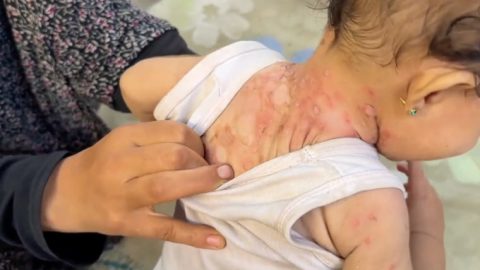

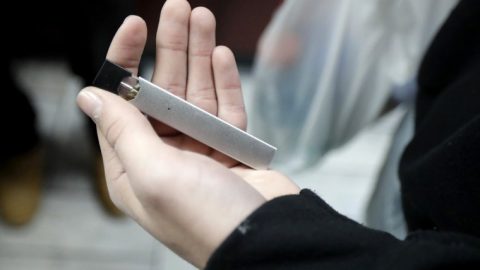
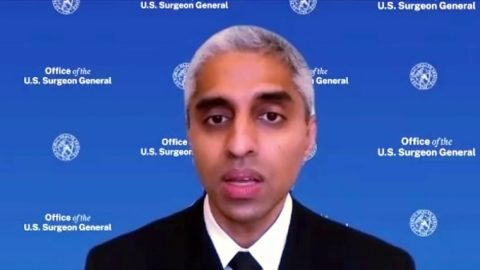
Recent Comments